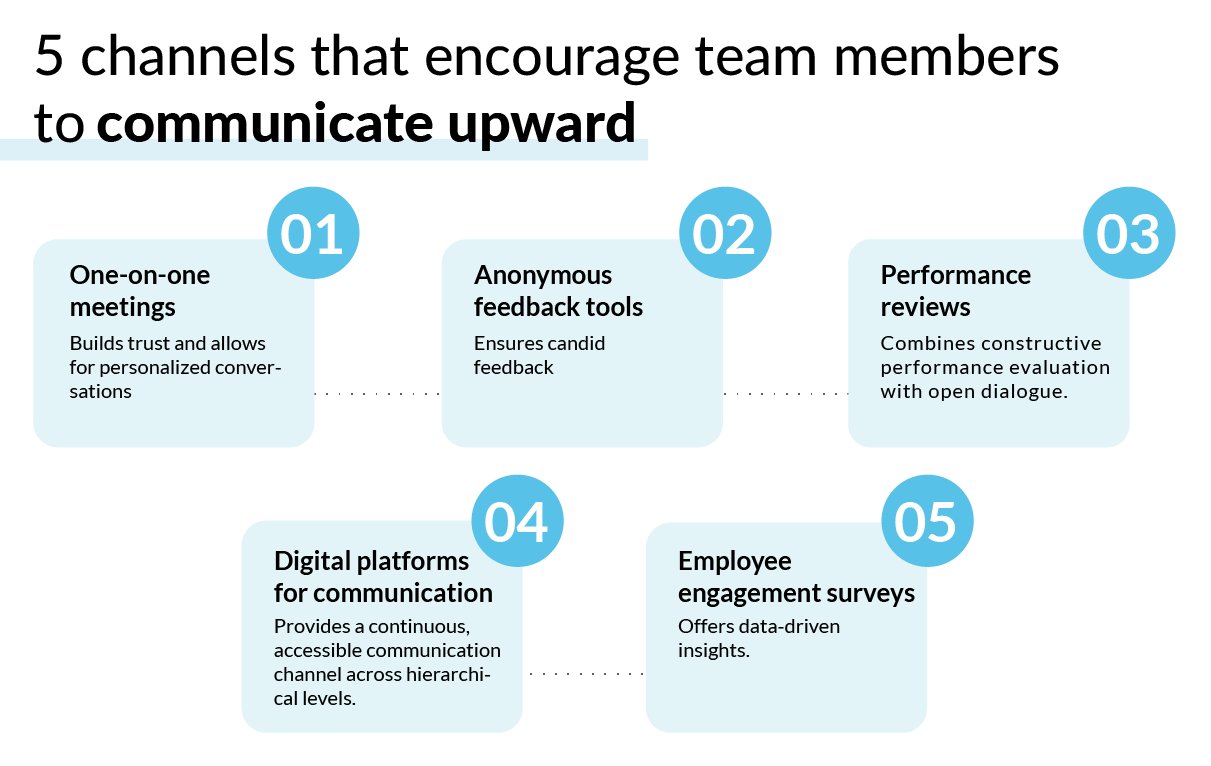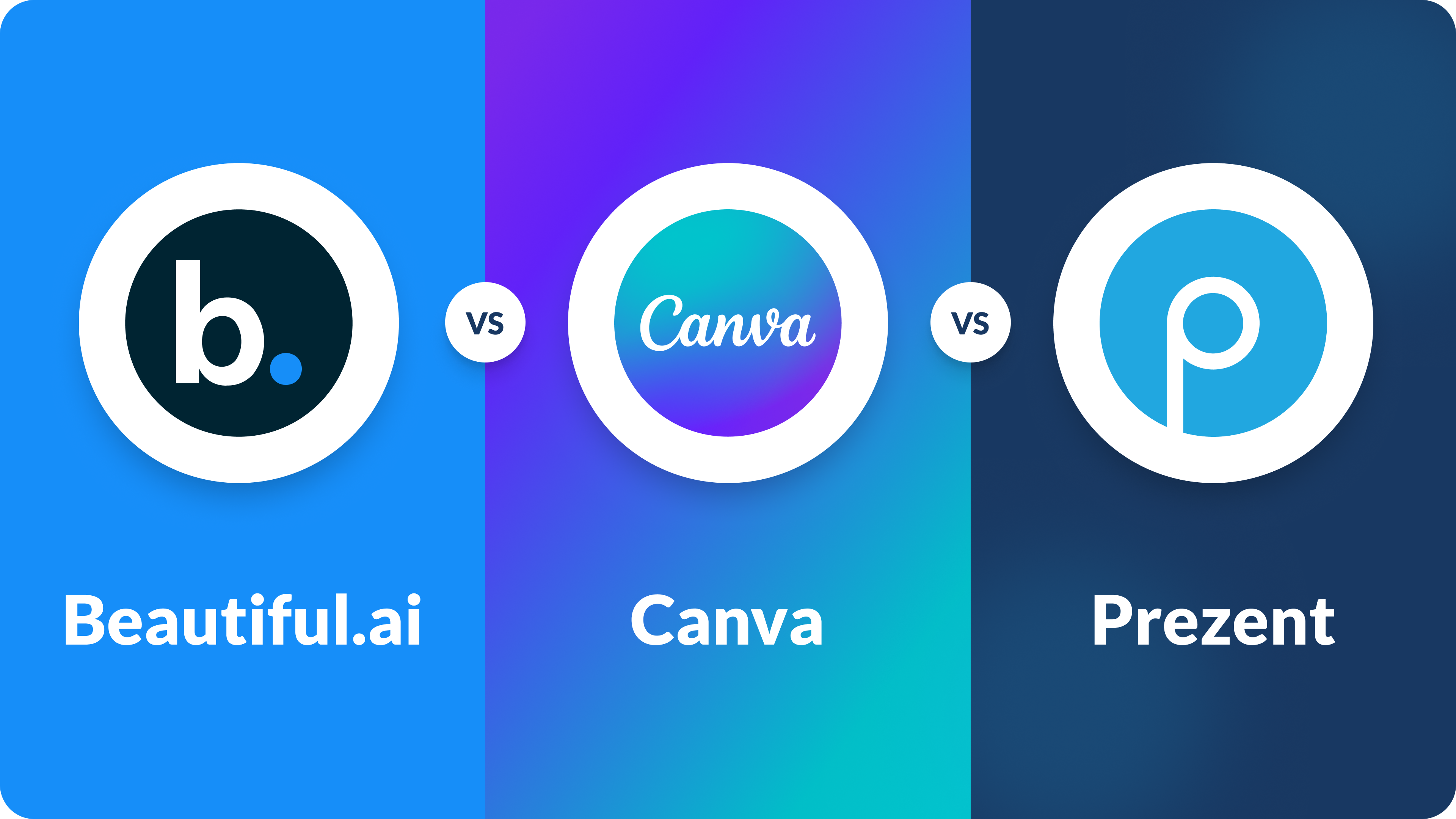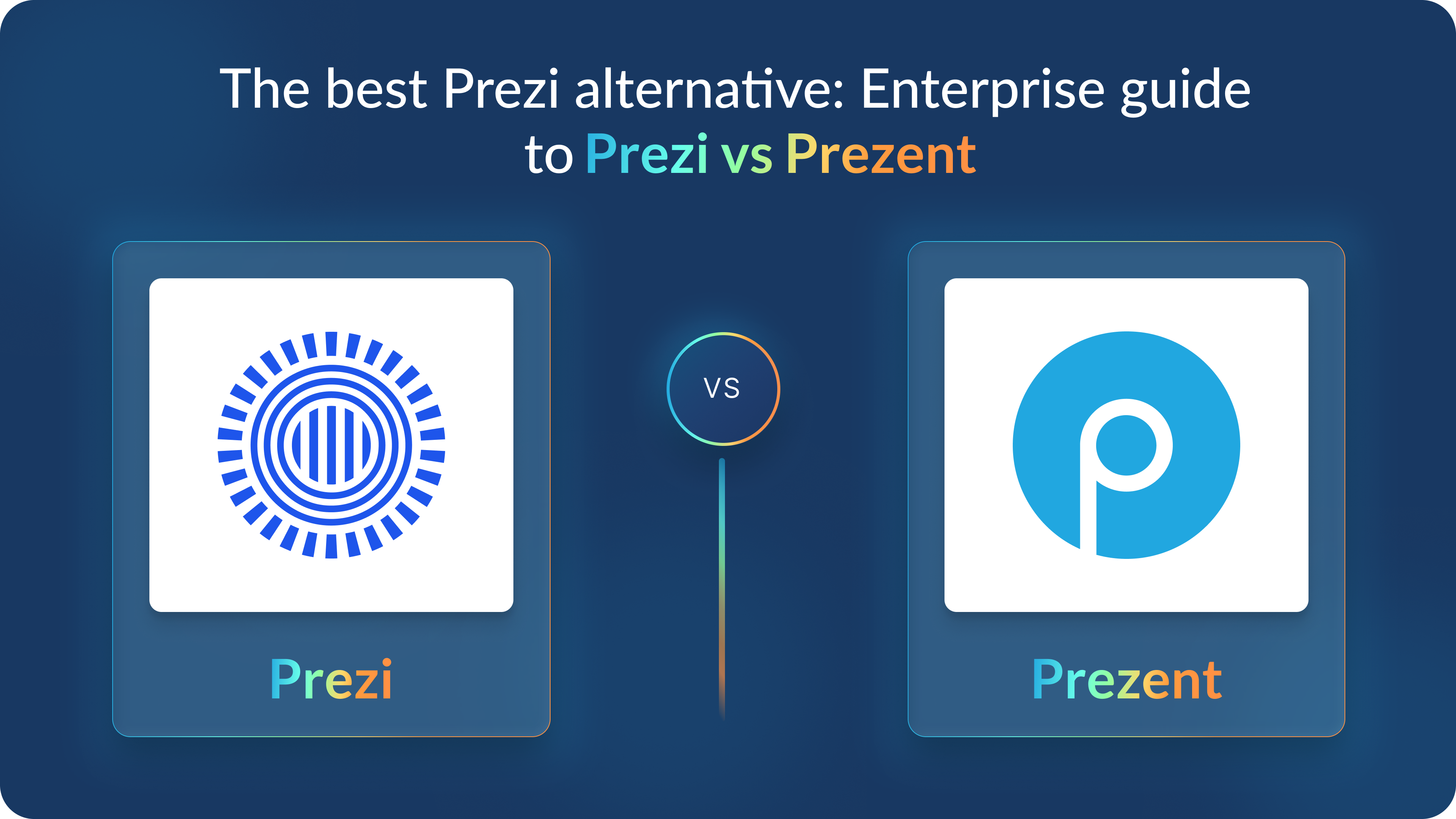Effective upward communication: A guide to foster upward communication in the workplace
.webp)
Communication is the lifeline of any organization, connecting all its parts to ensure smooth and efficient functioning. While top-down communication delivers direction and expectations from leaders, upward communication allows employees to share feedback, concerns, or ideas with management.
In this article, we’ll explain everything you need to know about upward communication. We’ll explain why it is important, provide practical ways to implement it, and provide examples that show its real-world impact.
Understanding upward communication in the workplace:
Upward communication serves as a vital bridge between employees and management. It allows critical insights, employee concerns, and fresh ideas to flow seamlessly to leadership, ensuring transparency and collaboration. This open exchange strengthens internal communication and cultivates a more inclusive organizational culture where everyone feels heard and valued.
Organizations that prioritize practices like regular performance reviews and one-on-one check-ins empower employees to share their perspectives while providing managers with valuable feedback. This balanced flow of information enhances decision-making while boosting employee morale, creating a more cohesive and productive workplace.
What are the benefits of upward communication:
A company with a strong upward communication process is far better equipped to handle crises. Enabling employees to share real-time insights and on-ground realities ensures quick, informed decision-making. This highlights the importance of upward communication system in an organization.
Encouraging upward communication provides several valuable benefits, including:
- Improved decision-making: Employees often have a better understanding of day-to-day operations and can provide actionable insights.
- Increased employee engagement: When employees feel their opinions matter, they are more likely to stay committed to the organization.
- Enhanced trust: Open communication builds trust between employees and management.
- Greater productivity: Employees who feel heard and appreciated are generally more productive and motivated.
Understanding the difference between upward and downward communication:
Upward and downward communication are essential components of effective communication, each serving distinct purposes. Upward communication flows from employees to upper management, like sharing feedback, ideas, and concerns. On the other hand, downward communication is the communication from management, for example, delivering instructions, updates, or feedback. Both are critical for organizational success, but upward workplace communication promotes a two-way dialogue that encourages engagement and collaboration.
- Purpose: Upward communication is about employees providing feedback or suggestions, helping management understand on-ground realities. For instance, an employee might suggest improving workflow during a team meeting. Downward communication, on the other hand, involves giving directives, such as a manager assigning tasks during a project briefing.
- Tone: Upward communication is often consultative and encourages participation, while downward communication tends to be more instructional, providing clear guidance or expectations.
- Channels: Upward communication often uses tools like suggestion boxes, surveys, or feedback sessions. Downward communication typically employs memos, announcements, or company-wide meetings.
Understanding these differences allows organizations to balance both types effectively.
💡For example, during a product launch, management may use downward communication to outline goals and strategies, while employees can use upward communication to share customer feedback or operational challenges. Together, these flows ensure alignment and adaptability across all levels of the organization.
How to implement upward communication in your teams?
Establishing effective upward communication requires a unified effort across the organization. Leaders play a very important role in promoting this environment by modeling open communication, actively listening to employees, and acting on their feedback.
Creating a workplace where upward communication thrives demands intentional strategies and actions. Here are some effective strategies to implement upward communications in your workplace:
- Provide safe communication channels: Ensure employees have multiple ways to express their thoughts, such as through online platforms, suggestion boxes, or regular in-person forums. For example, a company might use an internal feedback tool where employees can share ideas anonymously, encouraging honest and open participation.
- Acknowledge feedback: Recognize and appreciate employee contributions through a public "thank you" in meetings or written acknowledgment in emails. This helps sustain enthusiasm for sharing ideas and suggestions.
- Train managers: Equip leaders with the communication skills needed to engage meaningfully with their teams. A report on Gen Z highlights empathy as the second most important soft skill they seek in their bosses. This is especially relevant since Gen Z individuals born between 1997 and 2012 are now a significant part of the workforce. Empathy training, which focuses on skills like active listening and providing constructive feedback, is essential to engaging and motivating this group effectively.
- Encourage employee participation: Host interactive forums or focus groups where employees feel comfortable voicing their opinions. For example, monthly team check-ins can provide a platform for employees to share feedback directly with decision-makers.
- Simplify feedback systems: Use accessible tools like apps or surveys to collect input. Organizations like Google, for example, regularly use employee pulse surveys to gauge team sentiment and gather actionable insights.
- Close the loop: Share how employee feedback has influenced decisions or resulted in changes, such as implementing a new policy or improving workflows. When employees see the impact of their input, they’re more likely to stay engaged and proactive.
Real-world examples of effective upward communication: Amazon

Amazon uses a virtual suggestion box to encourage employees to share ideas. One of its greatest successes came from engineer Charlie Ward, who suggested offering free shipping to build customer loyalty. This idea led to the creation of Amazon Prime, now a cornerstone of Amazon’s business with over 200 million global members.
This story is an exceptional example of upward communication. It highlights how a simple communication strategy can make employees feel valuable and help drive innovation at the same time. By providing employees with an accessible platform to share their ideas and act on them, Amazon has not only improved its services but also set an example of how empowering employees can lead to extraordinary outcomes.
Tips to foster upward communication
The flow of information in upward communication allows lower-level employees to share valuable insights that can influence top management's decisions. This constructive exchange ensures that voices across the organization are heard to improve inclusivity and collaboration.
Below are some tips to help you encourage upward communication:
- Implement open-door policies: Make managers approachable by creating an environment where employees feel comfortable discussing ideas or concerns directly.
- Organize feedback sessions: Schedule regular meetings or team discussions to gather input from employees and address their observations actively. Google Forms allows employers to collect suggestions and feedback while ensuring anonymity for employees easily.
- Recognize contributions: Show appreciation for employees who share valuable insights, whether through public acknowledgment or personal recognition, to inspire continued participation.
- Invest in communication tools: Use modern platforms like suggestion apps or feedback software to streamline the process and make sharing ideas simple and efficient.
- Eliminate communication barriers: Address employees' fears or hesitations by encouraging a culture of trust and psychological safety, ensuring they feel secure voicing their opinions.
5 Essential channels that encourage team members to communicate upward:
Promoting hierarchical communication goes beyond providing channels. It is about using them effectively to build trust and engagement. Here’s how can optimize key communication channels for the best results:
- One-on-one meetings:
Use these sessions to ask open-ended questions like, “What challenges are you facing?” or “What improvements would make your work easier?” Follow up on previous feedback to show employees their input is valued. Keep these meetings consistent and private to create a safe space for candid discussions. - Anonymous feedback tools:
Regularly review and act on feedback submitted through suggestion boxes or anonymous surveys. Share aggregated results with the team and outline action plans based on their suggestions. This transparency builds trust and motivates employees to continue sharing. - Performance reviews:
Performance reviews are a great opportunity for employees to provide feedback on their roles, challenges, and even management practices. It combines constructive performance evaluation with open dialogue, fostering mutual respect and understanding. Encourage employees to share their thoughts on areas for improvement in the organization or team dynamics.

- Digital platforms for communication:
Platforms like Slack or Microsoft Teams are excellent for real-time feedback. Create dedicated channels for ideas or concerns and ensure managers actively participate in these discussions. Acknowledge suggestions in these forums to maintain an inclusive and engaged environment. - Employee engagement surveys:
Design these surveys with targeted, actionable questions to gather meaningful feedback on workplace culture and performance. Use data analytics tools to identify trends and address concerns promptly. For example, if surveys highlight a need for skill development, implement relevant training programs to meet those needs.
⚡Pro-tip:
Make the feedback loop visible. After gathering input, communicate how it has been implemented or why certain suggestions weren’t feasible. This builds a culture of accountability and ensures employees see the tangible impact of their contributions.

How Prezent can facilitate a culture of upward communication:
Prezent is an intelligent business communication platform that empowers professionals to create high-quality presentations aligned with company goals and industry standards. When communicating with leadership, such as during performance reviews, clarity and focus are crucial. Prezent’s features—hyper-personalization, compelling storytelling, and effective visualization—ensure key messages are delivered clearly, engagingly, and efficiently to decision-makers. This makes it easier for employees to communicate their insights and concerns to senior management, enabling leadership to better understand and act on employee feedback.

Learn more about Prezent and explore how you can enhance employee satisfaction and engagement by making communication among employees and leadership easy and effective. Schedule a demo at your convenience or take full advantage of your free trial to explore the platform.













